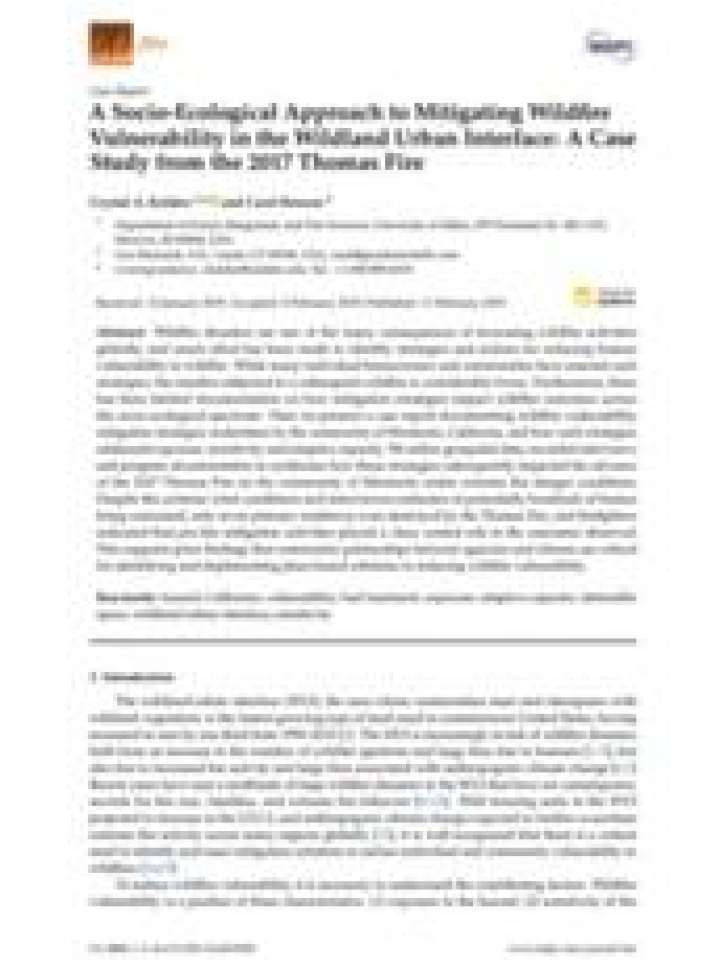A socio-ecological approach to mitigating wildfire vulnerability in the wildland urban interface: A case study from the 2017 Thomas Fire
Wildfire disasters are one of the many consequences of increasing wildfire activities globally, and much effort has been made to identify strategies and actions for reducing human vulnerability to wildfire. While many individual homeowners and communities have enacted such strategies, the number subjected to a subsequent wildfire is considerably lower. Furthermore, there has been limited documentation on how mitigation strategies impact wildfire outcomes across the socio-ecological spectrum.
The authors present a case report documenting wildfire vulnerability mitigation strategies undertaken by the community of Montecito, California, and how such strategies addressed exposure, sensitivity, and adaptive capacity. The authors utilize geospatial data, recorded interviews, and program documentation to synthesize how those strategies subsequently impacted the advance of the 2017 Thomas Fire on the community of Montecito under extreme fire danger conditions. Despite the extreme wind conditions and interviewee estimates of potentially hundreds of homes being consumed, only seven primary residences were destroyed by the Thomas Fire, and firefighters indicated that pre-fire mitigation activities played a clear, central role in the outcomes observed. This supports prior findings that community partnerships between agencies and citizens are critical for identifying and implementing place-based solutions to reducing wildfire vulnerability.
Explore further
